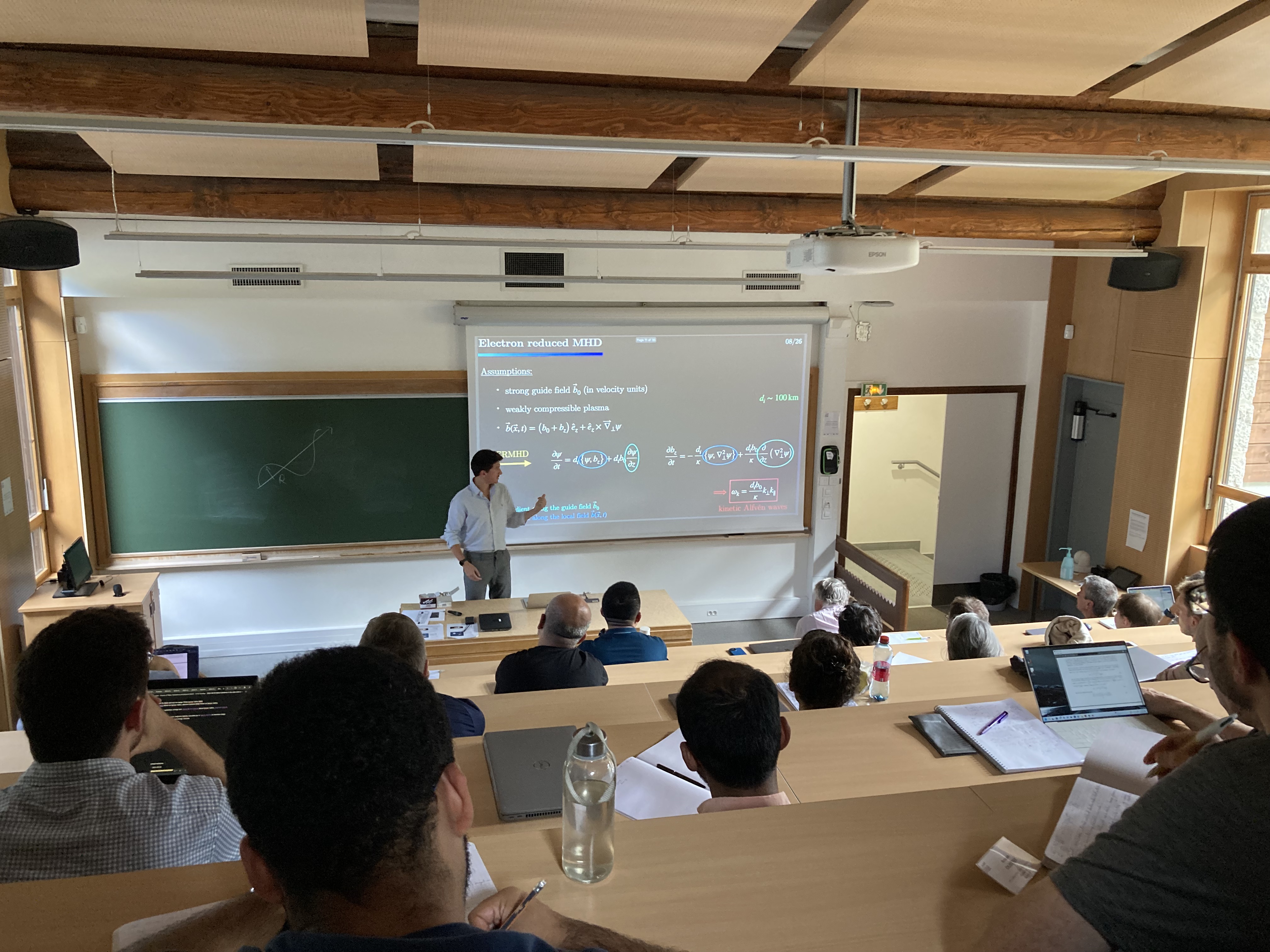Wave Turbulence in the Solar Wind at Electron Scales: Fact or Fiction?
Tuesday 03, 16:00
Vincent David
University of New Hampshire
The solar wind is the quintessential turbulent plasma, characterized by its low collisionality, lack of boundaries, and proximity to Earth (on a cosmic scale), enabling spacecraft missions to collect in situ data. This presentation focuses on the turbulent properties of kinetic Alfven waves (KAW), which represent the successive stages of the Alfven wave cascade originating from magnetohydrodynamics (MHD) scales. Operating within a frequency range from $\sim 1 Hz$ to $\sim 100 Hz$ [1], these waves are primarily driven by electron dynamics. Protons, being over 1800 times heavier than electrons, cannot effectively track electron dynamics and instead act as a neutralizing background. Two key questions will be addressed: (i) Do we observe wave turbulence of KAW in in situ data? (ii) What is the impact of the lack of collisionality on it?
To investigate the first one, I will present recent findings from high-resolution direct numerical simulations of Electron Reduced MHD. These simulations reveal that only one of the three possible turbulent regimes predicted by this model aligns with observational data [2]. Finally, I will discuss an important detail related to the second question, which often goes unnoticed: in low collisional plasmas such as those found in space environments, the absence of collisions challenges the assumption of a constant energy flux upon which much of wave turbulence theory relies [3]. This prompts the exploration of non-constant energy flux solutions analytically, revealing deeper insights into the dynamics of space plasmas. Moreover, regarding KAW turbulence, it might be the final milestone towards achieving full alignment between theoretical predictions and observational data.
References

